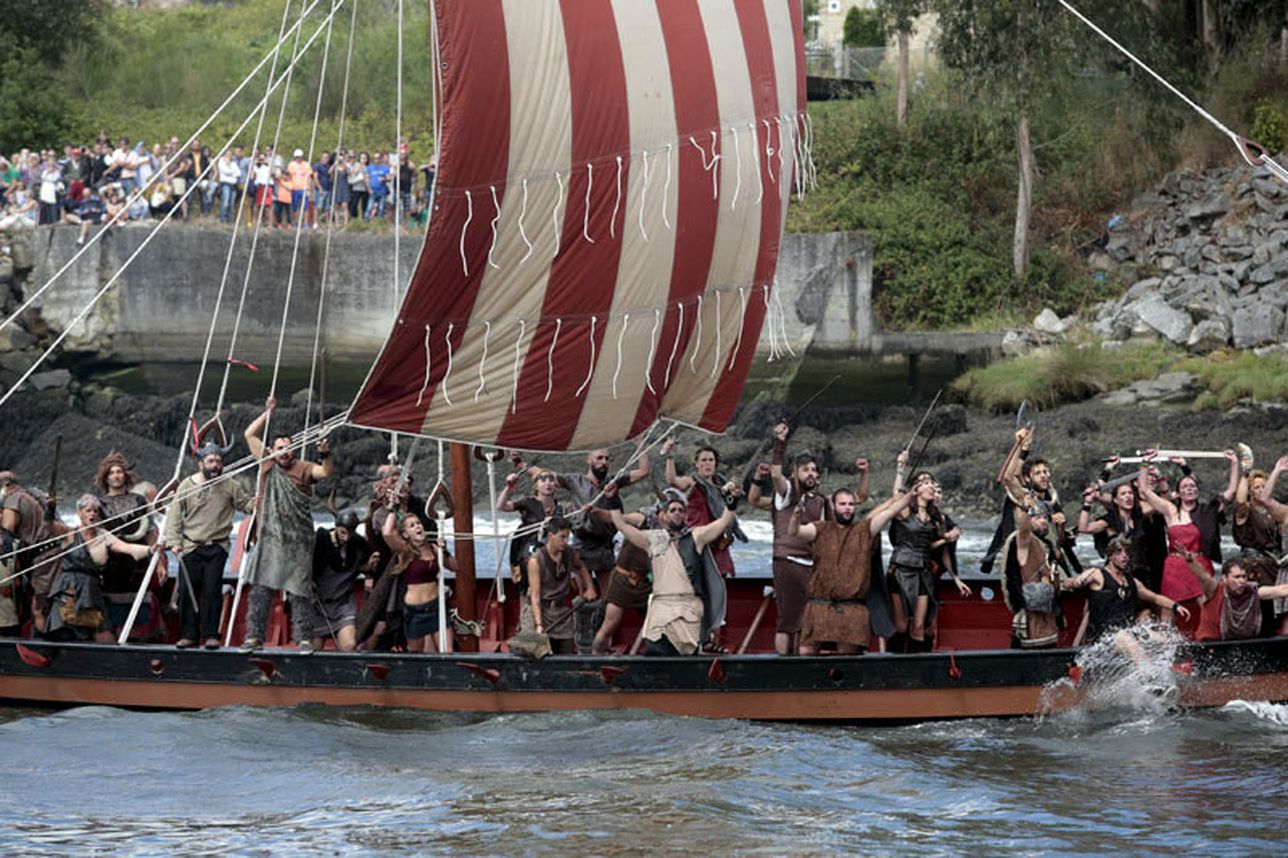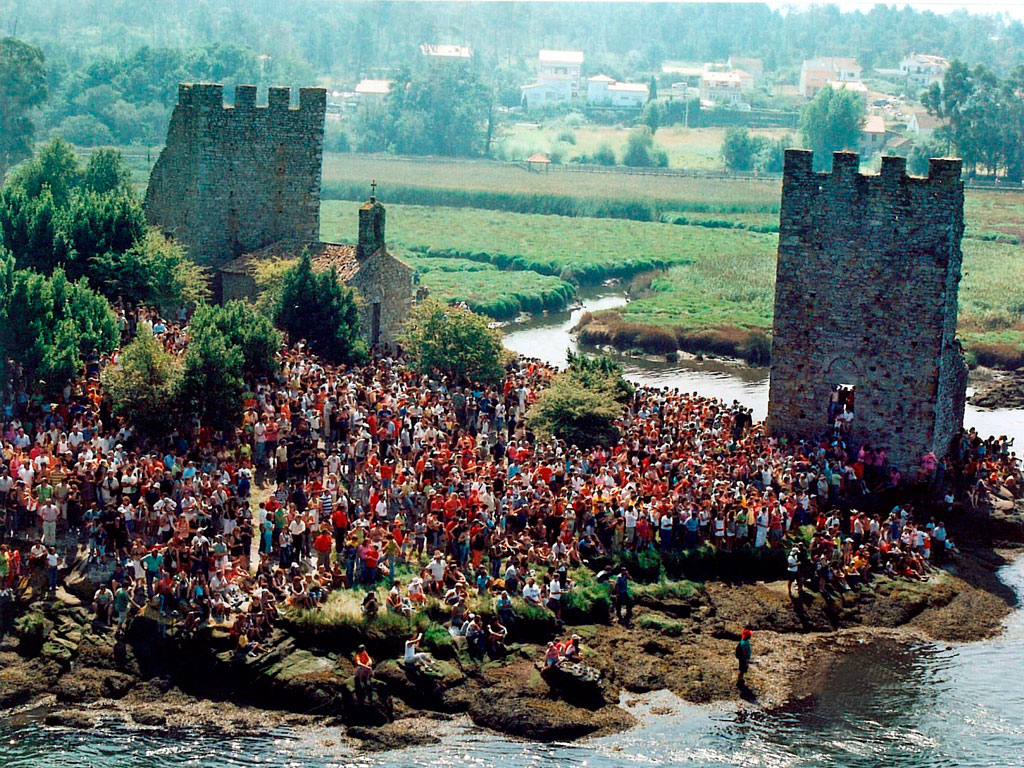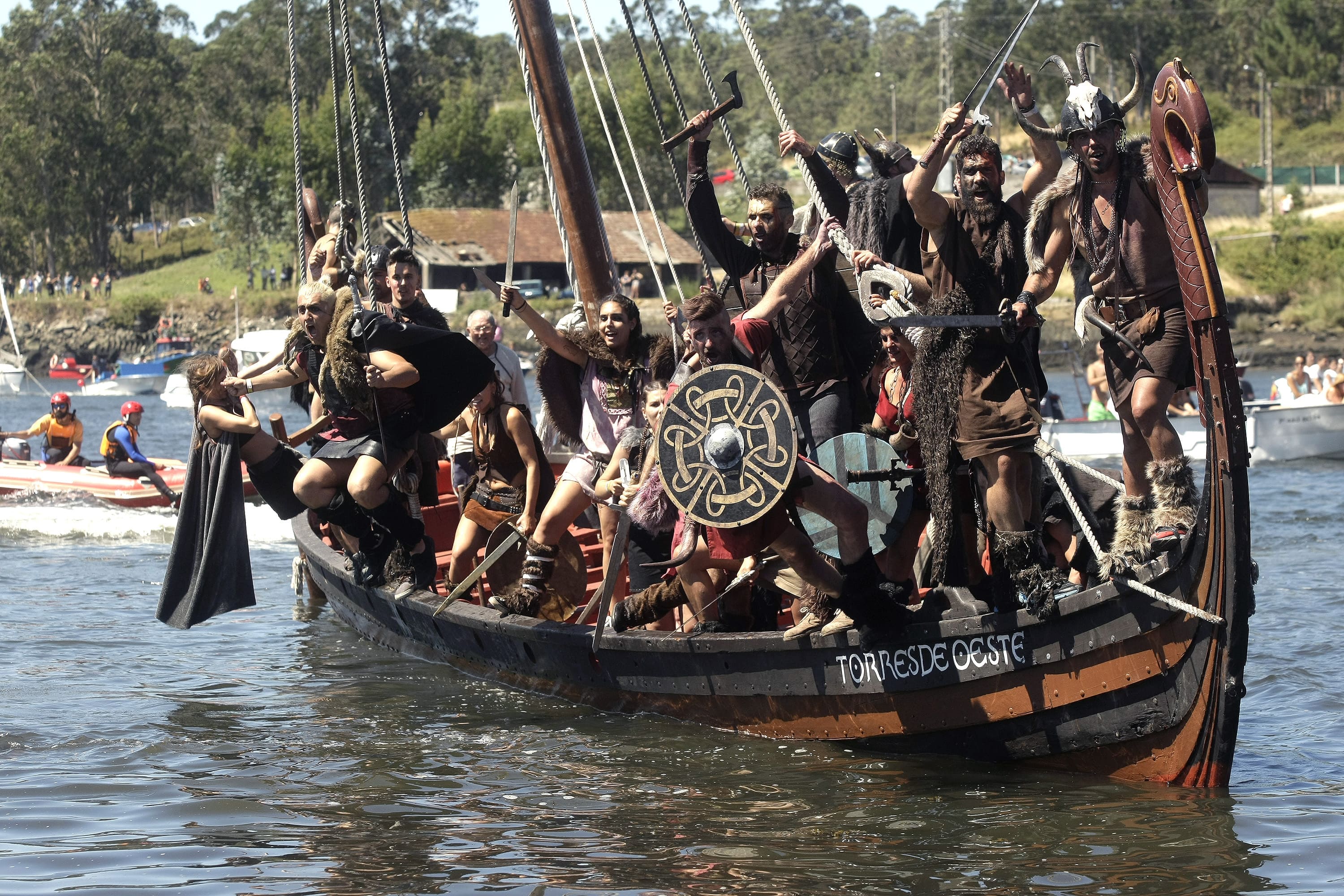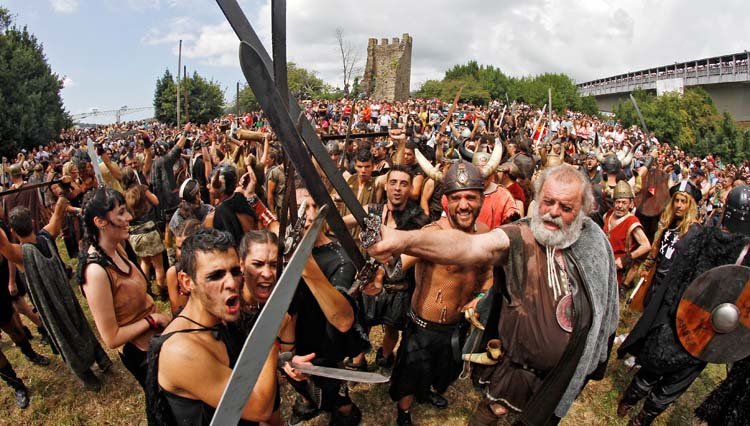
The Viking Romaría de Catoira is one of the most unique and well-known celebrations in Galicia. Its fame even transcends the borders of Spain.
The tradition of this secular festival dates back to 1960 when an event was held for the first time to commemorate the landings in the lands of the Ulla. The members of the Ateneo do Ullán —an artistic and literary forum made up of intellectuals from the area— were the precursors of a celebration that began as a gathering of friends with common cultural concerns. Starting in 1965, the workers of a local company took their place, and for almost 25 years they assumed the organization and sponsorship of a Romaría that, with the passage of time, was consolidating and acquiring more and more fame. In 1989, given the size that the Romaría was acquiring and the growing investment necessary to respond to the expectations it aroused, it was the local government that took over the organization of the event. This new period was marked by the introduction of novelties that enriched the festival and by its projection at the regional, national and international level. A good example of this is the brotherhood established with Frederikssund, the town with the longest Viking tradition in Denmark.


The Viking ships used in the landing - the longship "West Towers" and the "Frederikssund" - are the result of contacts established with the Nordic countries. The first was built in 1993 after a group of skilled artisans from Catoir travelled to Denmark to study Viking riverboat construction methods and decided to make a copy of the Skuldelev 5, found in the Roskilde fjord (Denmark). The longship « Frederikssund » is an adaptation of the Gokstad, a Viking ship found in Norway, and which also combines decorative designs inspired by the beautiful Oseberg ship. In 2019 a new ship is built in order to respond to the growing demand of the people who every year want to participate in the assault on the fortress while giving the event the greatest spectacularity. The latter vessel is called the Ardglass-Catoira, in homage to the Ardglass Vikings Association of Northern Ireland, with which Catoira has close ties.


Another of the changes that the Viking Romaría underwent over time was the extension of its duration. A fleeting Sunday in August fell short for an event of such magnitude. Thus, the Romaría program, when the City Council took over, was enriched with the Viking Romaría Theater Week and other activities that try to promote at the same time the cultural and literary spirit of its founders. These efforts were rewarded in 1988, when it was declared a Festival of National Tourist Interest, and later, in 2002, when it was awarded the distinction of Festival of International Tourist Interest.
The Viking Romaría is held in the Torres de Oeste, located on the banks of the Ulla River. The Vikings in the 9th and 10th centuries arrived in Galicia with the intention of plundering our lands, they met with resistance from the troops of the Castellum Honesti, who prevented the Norman armies and Saracen pirates from going up the river during that time, until the point of being considered this fortress the "Key and Seal of Galicia". More than a thousand years passed, and the roles changed. Now the Catoirenses and thousands of people from all corners gather around the Towers to welcome the barbarians. Violence, terror and hatred were transformed into a fun coexistence party in which the fearsome Nordic warriors peacefully invade the castle, and, this time, the thirst is not for blood but for red wine from Ulla. Folk music and gastronomy are fundamental elements in this Romaría. In a market set in medieval times, visitors are offered the most varied products: mussels and octopus, of course, are essential tapas.